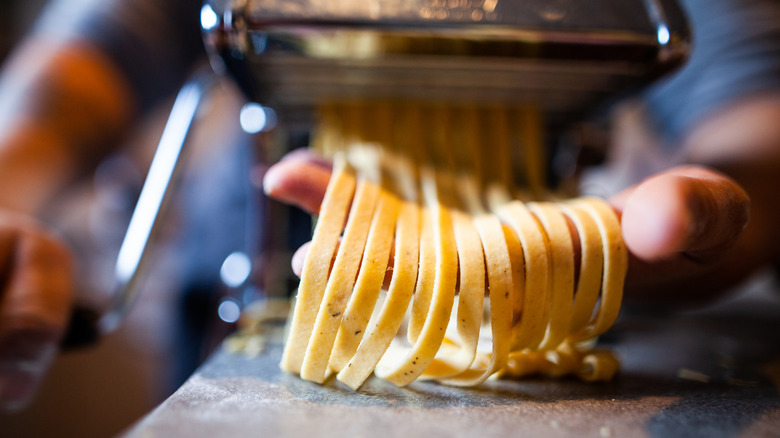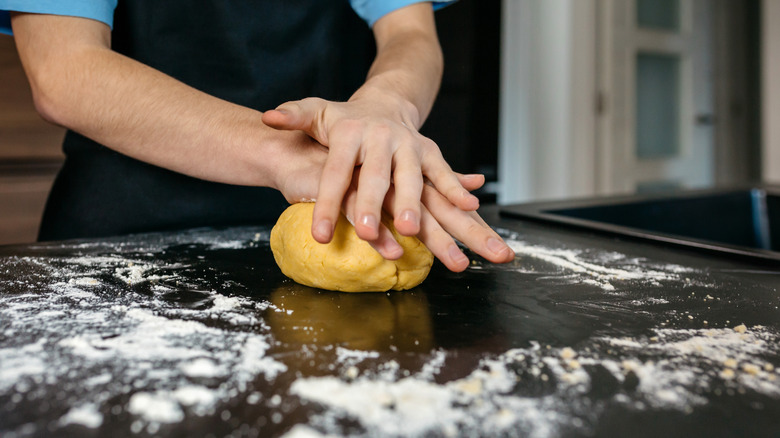The Mistake Beginners Should Avoid When Attempting Homemade Pasta
Making homemade pasta is a challenge that intimidates even the most experienced home cooks. It does take some time and is potentially messy, but with a bit of practice, making your own pasta really isn't as difficult as it initially seems. You've probably heard that, flavor and texture-wise, dried pasta doesn't hold a candle to fresh pasta. This is true, but to create perfect pasta, there are some things to know, including the one mistake that Joe Isidori, owner of Arthur & Sons Italian restaurant in New York City, named as a pasta maker's cardinal sin. According to him, you must rest the pasta dough before you attempt to roll it out.
Isidori's family has been churning out classic Italian American fare in New York since 1954 – the third-generation chef understands what it takes to make excellent, homemade pasta. Regarding the importance of resting pasta dough, Isidori told The Takeout, "People don't rest the dough [...] You knead it and then try to roll it out right away? Forget it. It's tight, it's tough, and it won't roll right. You gotta let the gluten chill out or the pasta's gonna fight you the whole time."
We asked Isidori what happens to pasta dough once you let it properly rest and he explained, "Gluten's what gives the dough its muscle – but after kneading, it's tense. Resting lets it relax so you get that smooth, elastic texture [...] Treat it right, it'll roll like a dream." In regards to how long pasta dough should rest for Isidori said, "Rest it on the counter for 30 minutes, or in the fridge [...] Just bring it back to room temperature before rolling."
More tips for making perfect pasta
Excellent homemade pasta isn't just dependent on the amount of resting time you give it, although that is a vital element of the process. According to Joe Isidori, great pasta begins with the flour you use to make it. While there are all sorts of recipes for homemade pasta that use various flours, Isidori said, "I go classic: 50/50 '00' flour and semolina. '00' gives you silky dough, semolina gives it bite. That combo? It's like Frank and Dean – classic, smooth, and strong. Perfect for a rich egg dough that holds sauce and cuts clean."
Once you have incorporated your eggs and any other ingredients into your flour, you'll begin to knead your pasta dough. During this process, it's important to pay attention to how your dough looks and feels. Isidori told us the dough should feel like slightly tacky Play-Doh, explaining, "If it's cracking, you're dry — add water. If it's sticking to your hands, you're wet — dust it with flour."
It's good practice to keep a small, clean spray bottle of water nearby when you're making pasta so that you can spritz dry dough as you're working with it. You might be surprised how just a spray of water can give dry dough the perfect consistency. The same concept holds true for adding additional flour; just a small sprinkle can help the dough reach the desired consistency.

